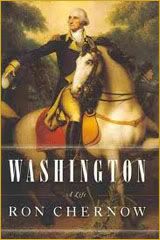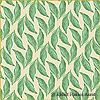The legacy of Norman Rockwell
 |
There are so many archived posts on this blog now, I thought this would be a good time to repost one that I especially enjoyed posting.
True Thanksgiving, I think, makes us consider why and how we give thanks. Every nation is in danger of resuming the malignant forces that overtook Europe during the first half of last century. I thought that a simple analysis of two paintings might make this point clearer.
From a post originally made on October 31, 2005. Appropriately mid-way between the American and the Canadian Thanksgiving Holidays.
Happy Thanksgiving.
Family Portraits: Adolf Wissel vs. Norman Rockwell
While doing research on color and the history of modern art, I came across this website which talks about Hitler's abhorrence for modern art, so much so that he would set up degenerate art exhibitions to ridicule these painters.
Instead, he wanted art that glorified his Aryan concept.
Now, this type of commissioned art had nothing to do with artistic requirements, but rather with ways to decimate Nazi propaganda.
Here is a strange, claustrophobic, family portrait, which is certainly meant to promote the happy, Aryan family life. It fails on many levels, although artistically, it is a well-composed piece.
 |
The strangest thing about this portrait is the little boy, who is not quite in the center, and who looks directly at the viewer. Normally, one associates such a bold stare with a mature or heroic character. Not a disconcertingly young, and audacious boy.
But there are many more things going on in this picture:
1. There is no grandfather in the painting, which I'm sure is quite a deliberate omission. As though to say, we don't need our past, but must look into the future alone. It it the child-bearing women (the grandmother is present) who seem to matter more. In other words, create the world anew, by destroying it first - quite in league with the götterdämmerung for a new dawn.
 |
 |
The bottom picture is the original.
(Click on images to view larger sizes without lines)
2. The boy is not really in the center of the original painting. If he were placed thus, he would be visually separate him from everyone else. His off-center position puts him close to his protective father.
Ironically, the picture with the centered boy is also the more claustrophobic, and it is the less successful design of the two. The artist was correct to compose his painting in the original manner.
Yet, this original composition, as well as being true to design, is really true to sentiment and psychology as well.
As the visually centered character, the boy would then really be on his own. I would suspect that the painter is projecting his own immaturity and lack of independence by avoiding this central position for the boy. But the painter still doesn't underestimate the aggressive and audacious character of the boy, making him stare at us with a bold and insolent stare.
This goes quite well with the National Socialists, who never wanted the father figure too far away, being unable to mature into independent and responsible men. But, they were aggressive, demanding and ruthless little boys at heart.
3. The women seem to have an even stronger presence here. The father's connection is with the old woman, presumably his mother. Not with his father, who is absent. And the rather burly young girl on the left is busy with her books, suggesting the rather masculine role many Nazi women were to play later on. Of course the wife is the child bearer, producing both the young boy (future leader) and the young girls (a future feminist and a future mother).
4. There is no centered visual hierarchy of people here. Although the father dominates a mini-pyramid of his daughter (to the left) and his son, he is in the background. His wife seems to have some more prominence, being in the foreground. And the father's timid eye-contact with the grandmother seems to make her his center. As mentioned, it is the young boy who seems to dominate the scene.
5. There is a lively dusk sky behind. But any warmth that emanates from the golds and oranges has be negated by the huddled family in its dark clothes and dour expressions.
6. For a farm family, there is very little farm food around. Whatever is displayed is consigned to the small bottom left-hand corner of the picture. The fragile tea-cup and the girl busy with her pen and paper suggest a less visceral family, more sophisticated rather than down-to-earth. Even the young boy has a delicately carved horse in lieu of the real thing.
7. The horizon seems to have been flattened out as though we’re in some stage-set interior with a backdrop, full of fantasy and manipulation. So, the exterior may really be an interior portrait gallery, and the family just posing as the earth-bound food-providing farmers.
Now contrast this with the Rockwell painting.
 |
1. The grandfather is the center, both pictorially and actually - there is no ambiguity about that.
2. The picture is designed in the classic pyramidal fashion, with the important figures at the top of the pyramid (grandfather and grandmother) and the rest of family widening out to the base.
3. Unlike the Wissel whose nature which we cannot seem to reach, Rockwell has brought nature into to the family, with the turkey, fruits and vegetables all laid out on the table. Rockwell's Nature is really abundant.
4. All the food follows the central and important axis, with the grandfather at the top.
5. Although we are indoors, there is a sense of space and light. The elongated perspective of the table with its white tablecloth connects with the white curtains on the window, which in turn promises to take us out into the sunny mid-day exterior.
6. Finally, this family seems to be fully enjoying the moment. And even the one person looking at us is doing so with a sense of fun and mischief, unlike the dour expression of the young boy in Wissel's painting.













